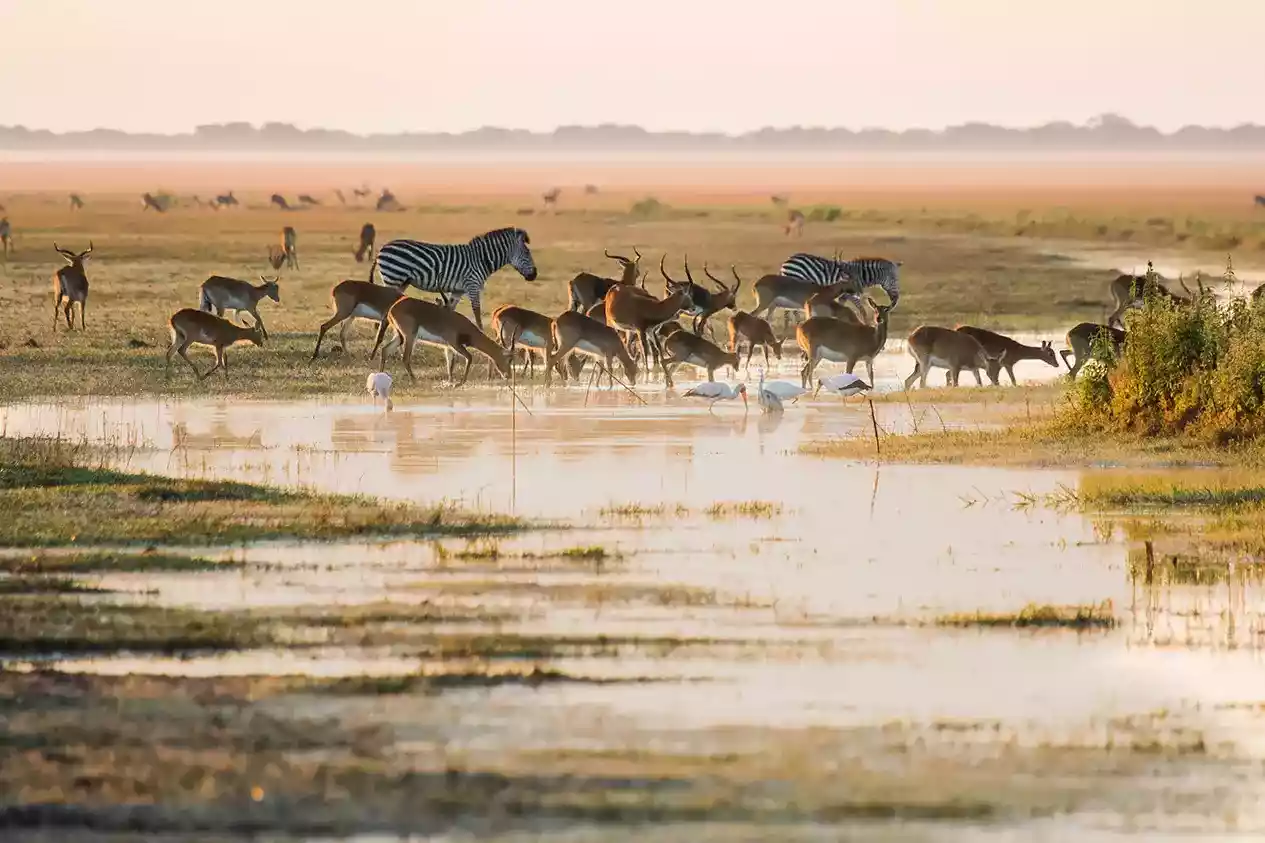
DEEP in Africa’s resource-rich forests, where the vibrant colours of the savannah meet the lush canopies of tropical forests, a silent war is being waged — one that threatens the rich biodiversity of the continent and the livelihoods of local communities.
While tourists flock to witness the mesmerising wildlife, a darker trade lurks beneath the surface: bio-piracy.
This illegal trade in plants and animals has escalated to become the world's third-largest criminal activity, following arms and drug trafficking, and it is wreaking havoc on the natural resource base of African countries, including Zimbabwe.
As customs officials at African countries’ entry points continue to uncover shocking discoveries, such as attempting to smuggle reptiles and plants from one southern African country, voices from the ground reveal this plunder's profound impact on the environment and communities that rely on these precious resources.
Experts assert that bio-piracy is not merely a crime; it is an organised enterprise that thrives on the exploitation of Africa’s natural treasures. The illegal wildlife trade encompasses a staggering array of species, from rare reptiles and orchids uprooted from their habitats to majestic leopards poached for their pelts.
"These activities are driven by a voracious demand in the North, where exotic pets and medicinal plants fetch high prices," says Tinashe Moyo, a development expert focused on wildlife conservation.
Zimbabwe, home to rich biodiversity, is particularly vulnerable. The illegal trade threatens the species and the communities that depend on these ecosystems for food, medicine and income.
“We are losing our heritage and our livelihoods," laments Nyasha Chikore (68), an elderly villager living adjacent to Gonarezhou National Park.
- Mavhunga puts DeMbare into Chibuku quarterfinals
- Bulls to charge into Zimbabwe gold stocks
- Ndiraya concerned as goals dry up
- Letters: How solar power is transforming African farms
Keep Reading
“When they take our wildlife, they take away our future.”
Government officials and national park authorities are acutely aware of the challenges posed by bio-piracy.
“We are constantly battling against well-funded and organised criminal networks,” a senior official at Zimbabwe's Parks and Wildlife Management Authority said, speaking on condition of anonymity.
“These groups often have sophisticated equipment and knowledge, making it difficult for us to combat them effectively."
Despite their efforts, the scale of bio-piracy is overwhelming. Recent operations have revealed that smugglers use advanced tactics, such as dyeing bird feathers to disguise illegal species or even hiding snakes in hollowed-out Bibles.
"Everytime we think we have a handle on the situation, they adapt and find new ways to evade capture," the ZimParks official added.
In the villages surrounding national parks, the impact of bio-piracy is palpable. Residents like Chikore depend on the ecosystem for their daily needs.
"We gather fruits, herbs and other resources from the forest. When poachers take the wildlife, it disrupts the balance; the loss of certain species can lead to overpopulation of others, resulting in crop damage and reduced food security for these communities,” she said.
Many villagers are caught in a web of poverty and desperation, making them susceptible to the allure of quick money offered by poachers.
“Some of my neighbours have turned to poaching as a last resort,” shares Farai Moyo, a local educator in Chiredzi.
“They earn more in one night than they would in a month of honest work; this economic pressure complicates conservation efforts, as local populations may view wildlife as more valuable,” he said.
However, community engagement in conservation initiatives has shown promise. "When communities are given a stake in the preservation of their resources, they become powerful allies," said Moyo, a development expert focused on wildlife conservation.
Programmes that involve locals in eco-tourism or sustainable harvesting practices not only provide alternative livelihoods but also foster a sense of ownership over the land and its resources.
The Zimbabwean government, alongside international organisations like the Convention on International Trade in Endangered Species of Wild Fauna and Flora, is working to combat bio-piracy through stricter regulations and enforcement.
“We are enhancing training for customs officials and park rangers, ensuring they can identify rare species effectively,” the ZimParks official said. Yet, the challenge remains vast, requiring ongoing collaboration between governments, NGOs and local communities.
Experts advocate for a multi-faceted approach that includes improving legal frameworks, increasing funding for conservation and promoting sustainable development practices.
“It’s not just about enforcing laws; it’s about fostering a culture of respect for nature,” Moyo said.
As the illegal trade in wildlife continues to flourish, the need for sustainable solutions has never been more urgent.
“We must address the underlying issues that drive bio-piracy, such as poverty and lack of education,” Chikore said.
“Only then can we secure a future where our forests and wildlife thrive.”
In the face of adversity, initiatives that empower villagers and integrate them into conservation efforts will turn the tide against bio-piracy. The hope is that through education, sustainable practices and a united front against organised crime, the natural treasures of Zimbabwe can be preserved for future generations.
Bio-piracy poses a grave threat to the rich biodiversity of Africa and the livelihoods of its people. The narratives of government officials, conservation experts and villagers reveal a complex web of challenges and opportunities in the fight against this illegal trade.
As awareness grows and collaborative efforts are strengthened, there remains hope for a sustainable future where both people and nature can flourish together. The fight against bio-piracy is not just a matter of protecting wildlife; it is about safeguarding the very essence of life for communities that depend on these resources, experts say.










